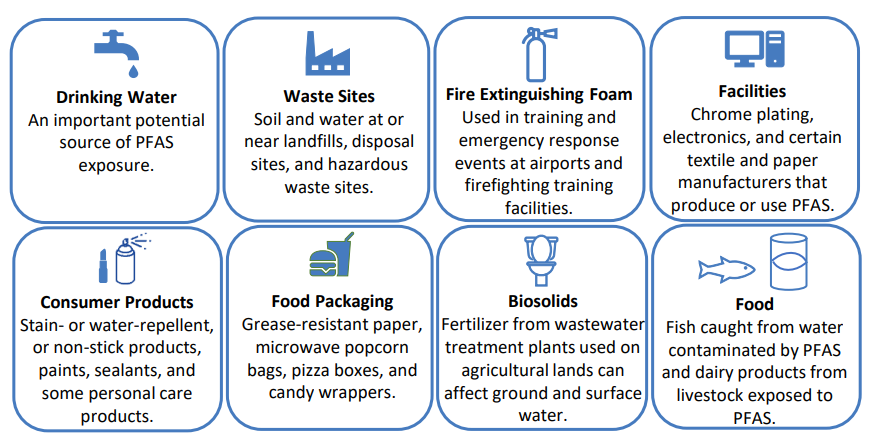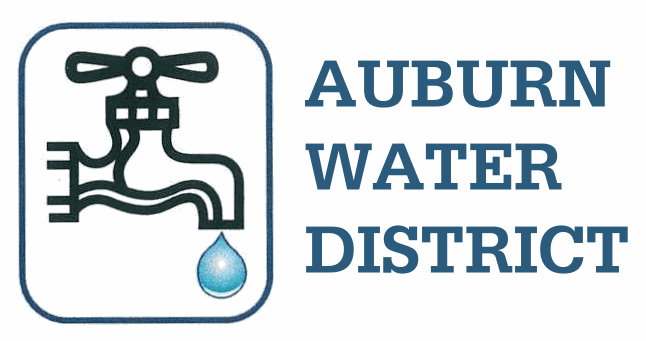What are PFAS?
According to United States Environmental Protection Agency (EPA), PFAS are manufactured chemicals that have been used in industry and consumer products since the 1940s. Because of their widespread use and their persistence in the environment, many PFAS are found in the blood of people and animals all over the world. There are thousands of different PFAS, some of which have been more widely used and studied than others. Here is a link to the EPA’s PFAS Explained document.
Are PFAS Safe?
Research is ongoing to determine how exposure to different PFAS can lead to a variety of health effects. Studies have shown that exposure to certain levels of PFAS can be toxic. There is evidence that PFAS suppress the immune system, making vaccines less effective. They can also increase the risk of cancer, liver disease, birth defects, and other health conditions.
Where are PFAS found?
PFAS can be present in our water, soil, air, and food as well as in materials found in our homes or workplaces, including: 
Massachusetts and PFAS
Massachusetts Department of Environmental Protection (MassDEP) passed a drinking water standard for PFAS in October of 2020. The Massachusetts Maximum Contaminant Level of 20 parts per trillion (ppt) for the sum of six PFAS compounds, referred to as PFAS6, only applies to Public Water Systems (PWS). On Wednesday, April 10th, 2024 the EPA announced that they have finalized a new federal National Primary Drinking Water Rule for PFAS, which will apply to PWS across the country. EPA’s Maximum Contaminant Levels for PFAS compounds, PFOA and PFOS at 4 ppt, and PFNA, PFHxS, and GenX Chemicals at 10 ppt. Auburn Water District has been monitoring for PFAS since the MassDEP’s standard took effect.
For more information regarding the newly published standards, please read the EPA Fact Sheet.
Does the District’s Water Currently Have PFAS?
Yes, the District has detected PFAS in its water sources and while we are in compliance with MassDEP’s current standard we do not meet the new EPA standard in most of our wells. MassDEP will adopt their own PFAS standards but they must be as stringent as the EPA’s. We will be working with our engineers to determine the best course of action to meet the regulatory timeline set forth in the new standard.
PFA's Related Questions
Should customers install a PFAS filtration system?
Customers can install a home water filter to reduce PFAS levels. However, the current water filters on the market only reduce PFOS and PFOA chemicals to about 70 ppt, which is significantly higher than MassDEP’s current standard of 20 ppt and the new EPA regulations of 4ppt. Reference MassDEP for additional information.
How is the District monitoring for PFAS?
The District monitors for PFAS by following the required sampling schedule established by MassDEP. Water samples are sent to an approved testing laboratory, and results are reported to the District. Testing results are also sent to the MassDEP.
If the PFAS6 result exceeds the MCL of 20 ppt regulatory standard, the District must issue a public education (PE) document within 30 days, the District must also issue a public notice (PN) within 30 days. Notifications will be posted on the District’s Website, Twitter, and Instagram. Information will also be distributed to the town of Auburn.
